As we’ve mentioned numerous times before, the Japanese are the world’s super denim nerds, and Lee Japan makes some of the most incredible reproductions. This is a stitch by stitch recreation of the Lee 101Z Riders as it was in 1952. Once you start inspecting the details further, you’ll soon realise the level of commitment put into these jeans to make them look completely like the original. Actually, the stitches in the “Lazy S” have already started to come out, which they also did on the originals. Oh, and by the way, there’s wide consensus among the denim aficionados that this was the model that James Dean wore in two of his movies. Yet the jeans were also worn by countless other rebels like Jackson Pollock and Bob Dylan.
In the European market, the exclusive Japanese Lee jeans are marketed as “Lee Originals.” The dry ones also sell under the “Lee Archives” alias, while the prewashes on the other hand are sold as “Lee Vintage” or “Lee Archives Worn”, but then this is just my interpretation of the constellation. The rounded Lee back pockets are made in a slimmer cut than the earlier Lee jeans, and they sit very far a part. Your girlfriend might not find your butt as cute when you’re wearing these as she does when you’re wearing those tight fashion skinny jeans.
I showcased these beauties in the article about “how to rinse your jeans“, and I was eager to find out if they would shrink at all. It’s a waist size 30, but they were a bit too big for me, so I crossed my fingers. And considering that these jeans are sanforised and shrinkage therefore should be down to 2-3%, they actually shrunk quite a lot. The waist shrunk from 43 cm to 41 cm (laid flat), the inseam went from 93 cm to 88,5 cm, and the rise shrunk with an even 2 cm. Now they fit like they should.
In a few weeks time, the jeans will once again be the centre of an article when I take them to Unionville in Stockholm to have them shorten and hemmed with their Union Special.
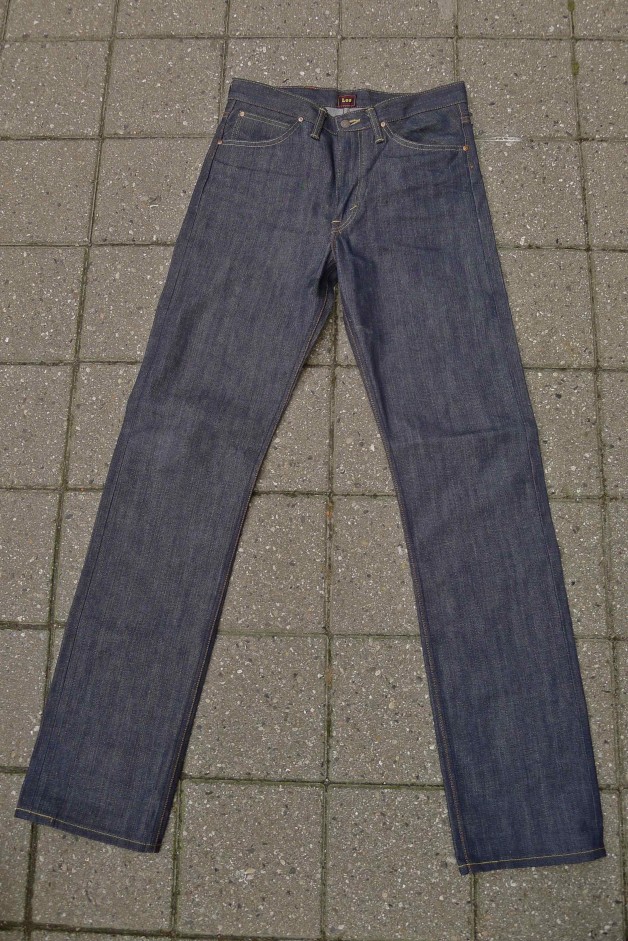 The waist is high, but the fit is regular and the legs are straight. The fabric is a hard wearing 13¾ oz. sanforised left-hand twill (as all Lee jeans) made by Kaihara with attention to detail. It’s an amazingly slubby fabric that I can’t wait to break it in!
The waist is high, but the fit is regular and the legs are straight. The fabric is a hard wearing 13¾ oz. sanforised left-hand twill (as all Lee jeans) made by Kaihara with attention to detail. It’s an amazingly slubby fabric that I can’t wait to break it in!
For extra strength, the inside seam of the leg is double stitched (which is another Lee innovation) and when you cuff them the single sided plain ecru selvage denim is revealed. And of course, the hems are heavily chained stitched, something you only achieved by using old American sewing machines, like the Union Special 43200G.
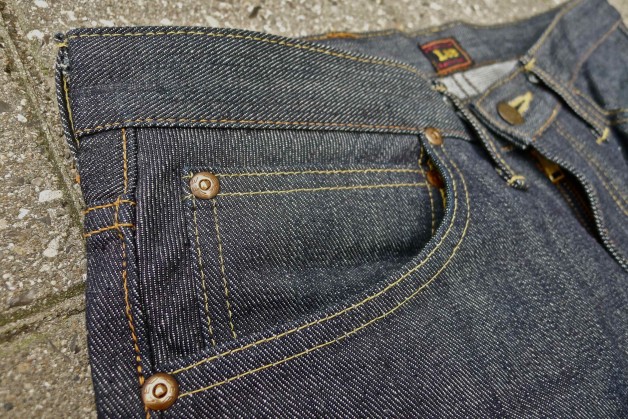 The riveted front pockets are made with a heavy boat sail cloth for pocket bags, and the back pockets are half lined as reinforcement with the same cloth.
The riveted front pockets are made with a heavy boat sail cloth for pocket bags, and the back pockets are half lined as reinforcement with the same cloth.
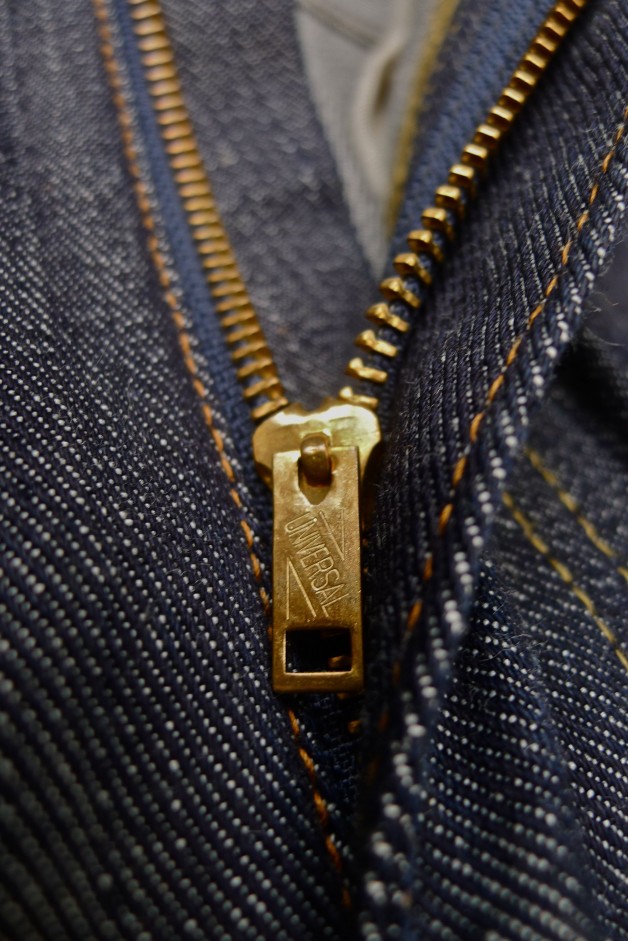 One of the important characteristics about these jeans is the zipper (hence the Z). Introduced in 1926, Lee was the first manufacturer to use zippers (the “Whizit” as they called it) in their overalls (back then termed “Iron Branded Cowboy Pants”). These jeans feature a heavy brass “Universal” zipper. You can read more about the history of Lee here.
One of the important characteristics about these jeans is the zipper (hence the Z). Introduced in 1926, Lee was the first manufacturer to use zippers (the “Whizit” as they called it) in their overalls (back then termed “Iron Branded Cowboy Pants”). These jeans feature a heavy brass “Universal” zipper. You can read more about the history of Lee here.
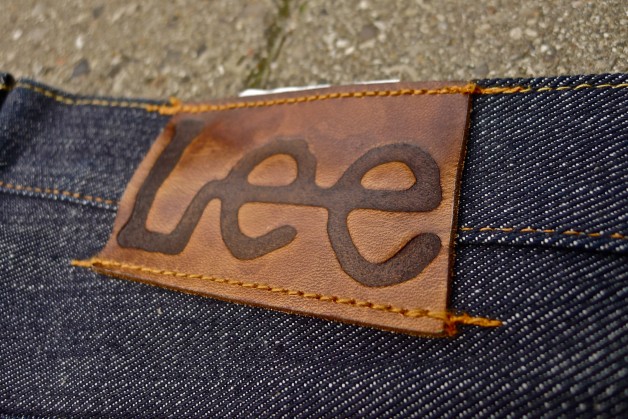 They also feature the iconic Iron Branded cowhide patch and the famous black Lee label is of course found on the back pocket. However, notice that both label and leather patch are missing the “R” trademark sign, which only appeared from the 60s onwards.
They also feature the iconic Iron Branded cowhide patch and the famous black Lee label is of course found on the back pocket. However, notice that both label and leather patch are missing the “R” trademark sign, which only appeared from the 60s onwards.
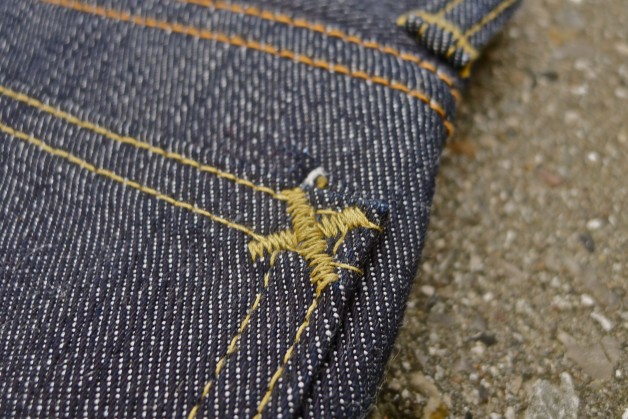 Cross tags instead of copper rivets on back pockets.
Cross tags instead of copper rivets on back pockets.
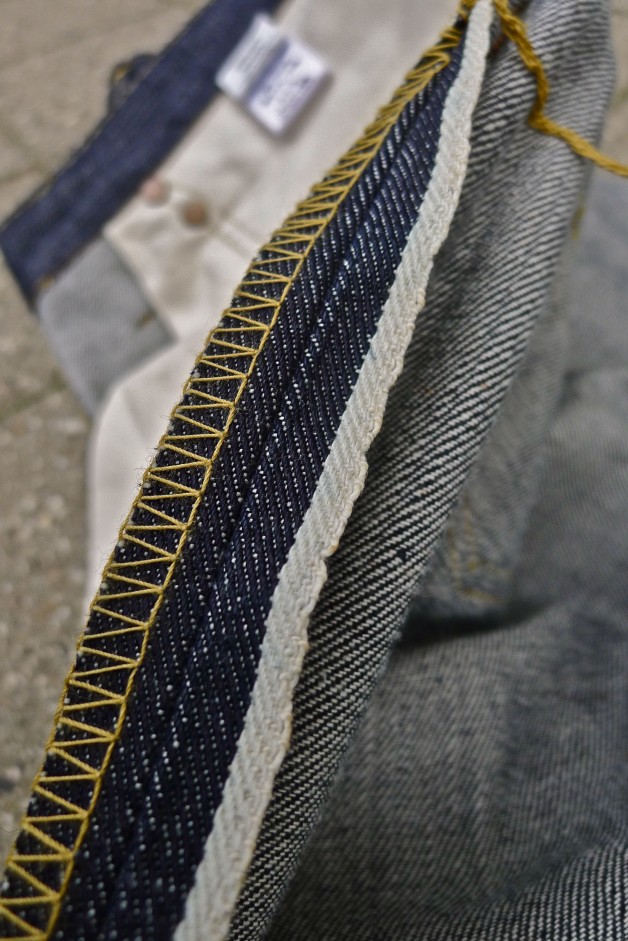 This is truly old school selvage denim.
This is truly old school selvage denim.
Notice the stitches in the middle of the pocket.
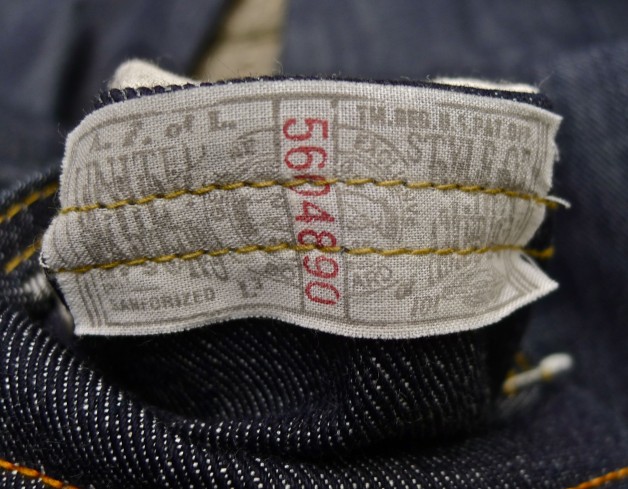 It’s a hidden patch inside the right back pocket that I haven’t yet been able to find any information about. But I’m still waiting for my Lee-guy to get back to me with some details about the jeans. Maybe something will come up there. Until then, if any of you guys out there have any knowledge about this label, please contact me.
It’s a hidden patch inside the right back pocket that I haven’t yet been able to find any information about. But I’m still waiting for my Lee-guy to get back to me with some details about the jeans. Maybe something will come up there. Until then, if any of you guys out there have any knowledge about this label, please contact me.
Words by Thomas Bojer.


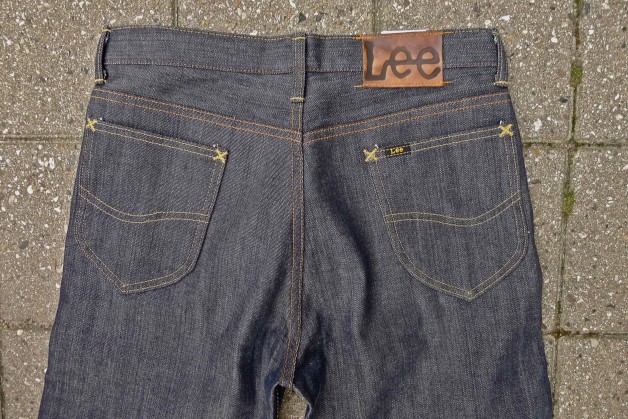
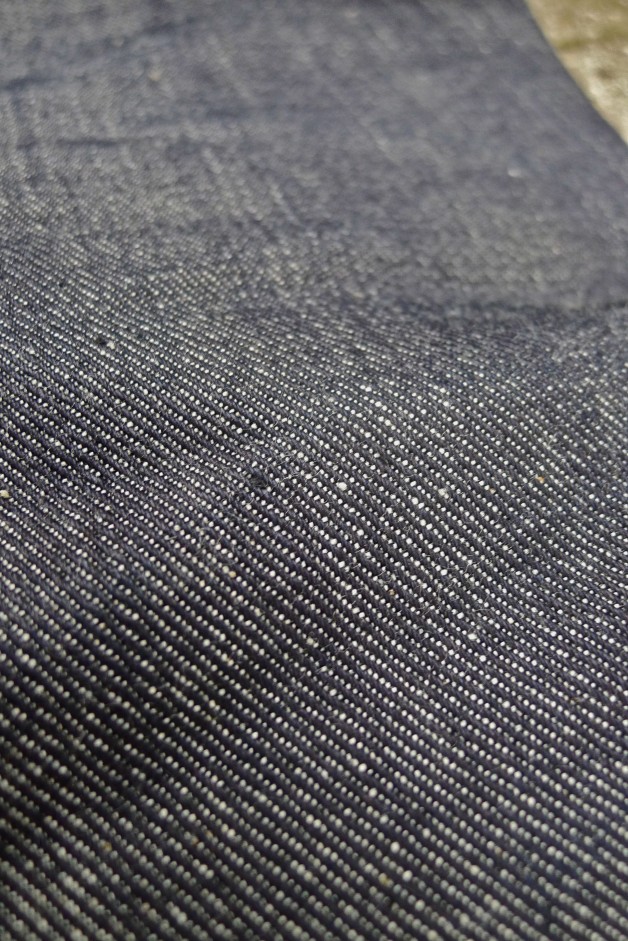
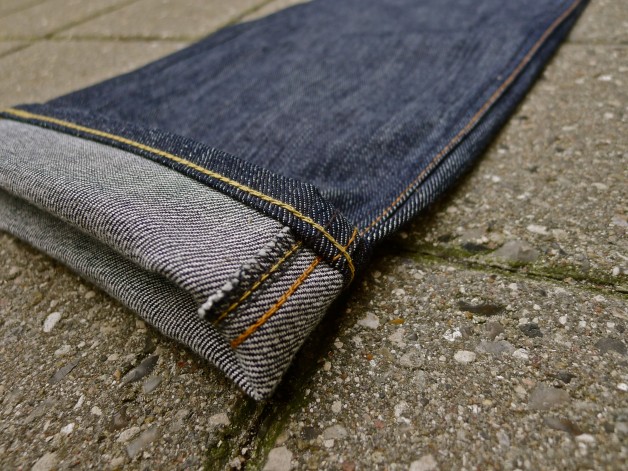
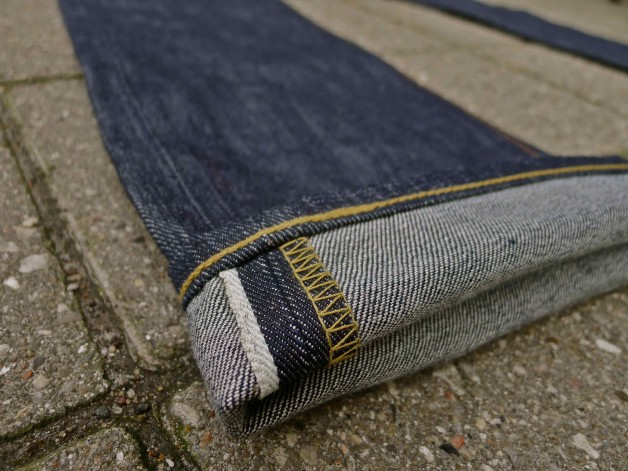
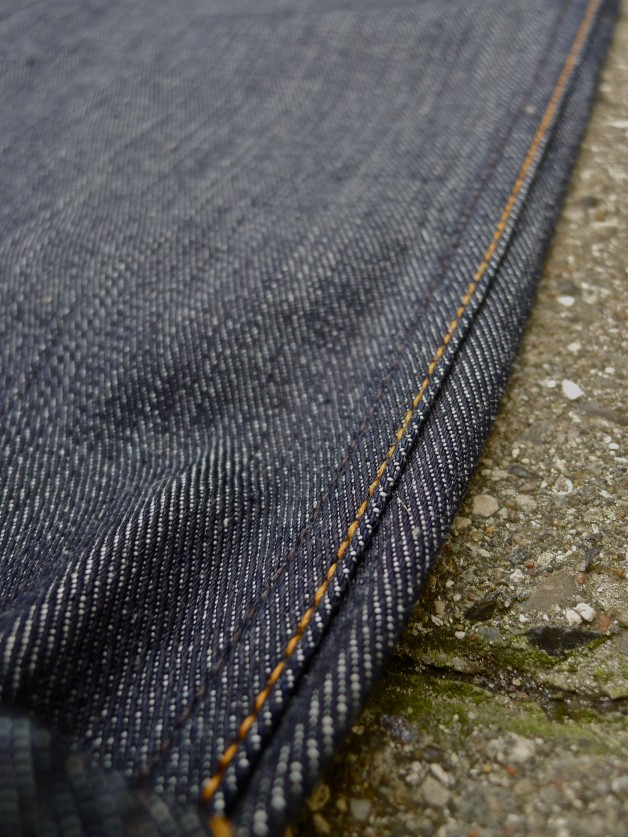
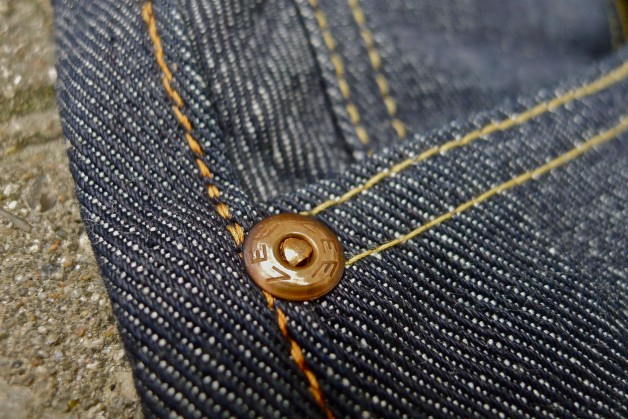
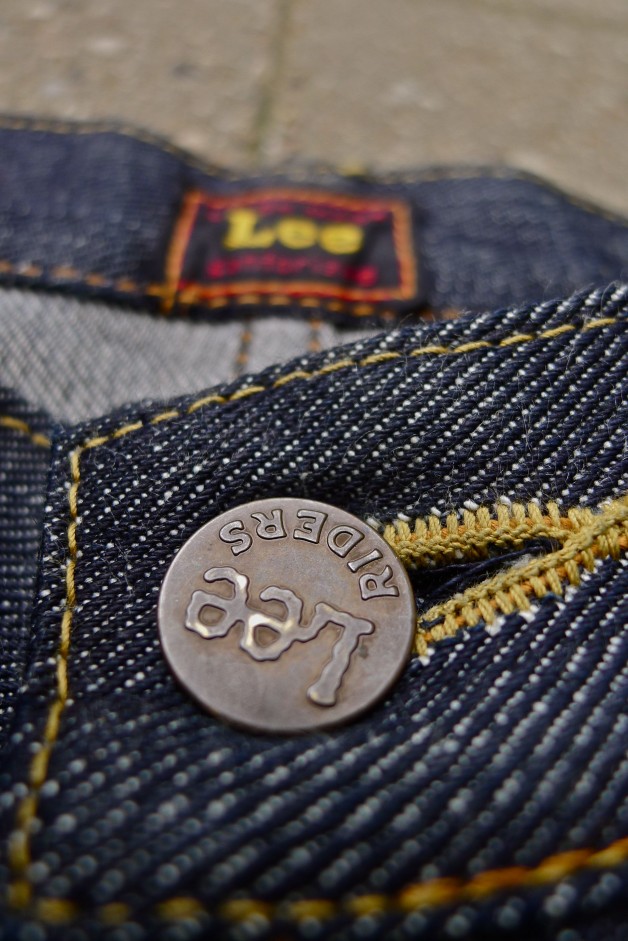
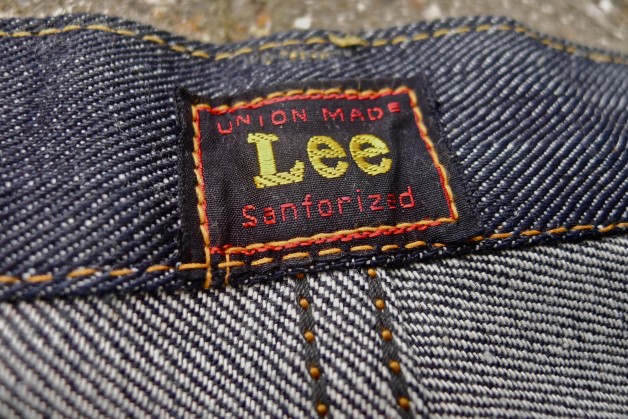
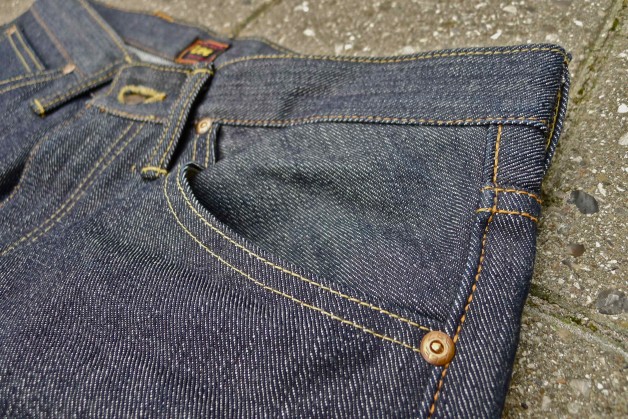
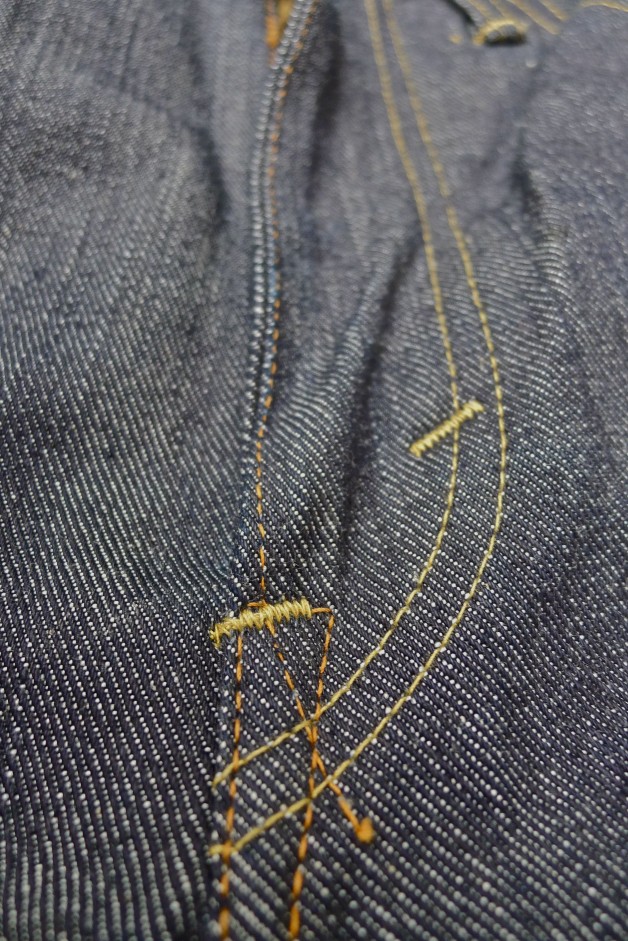
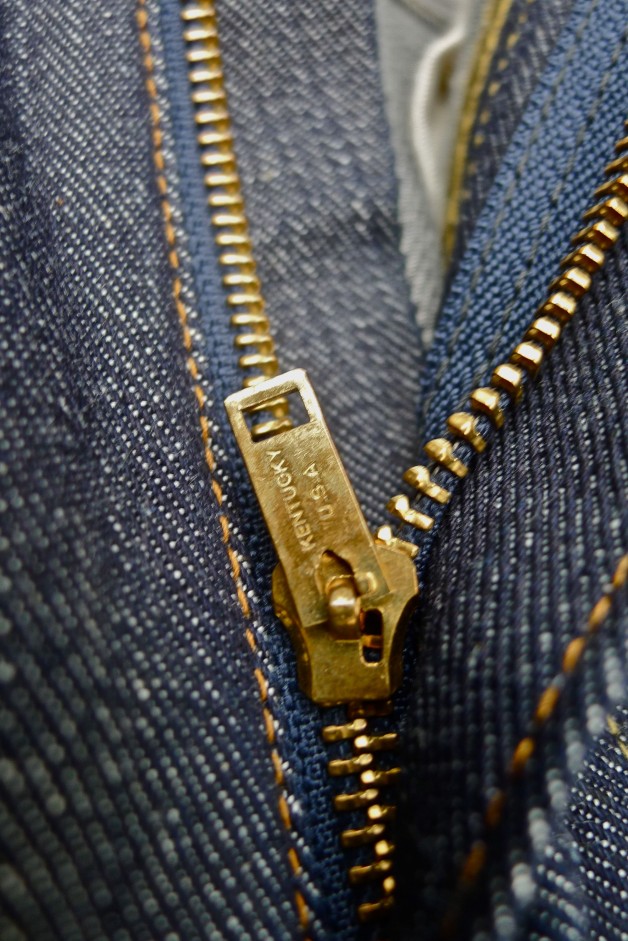
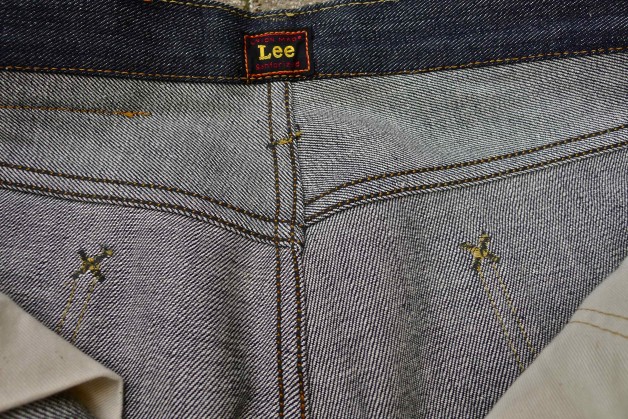
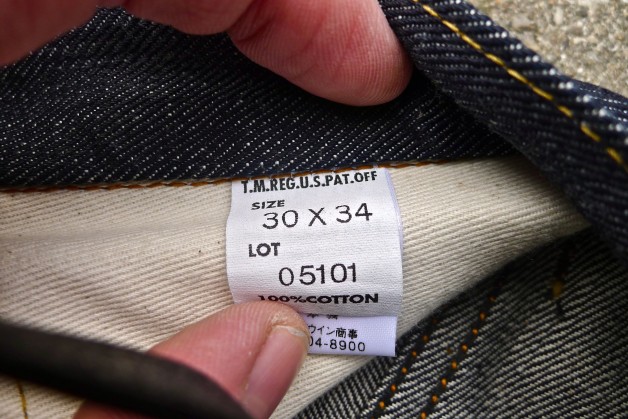
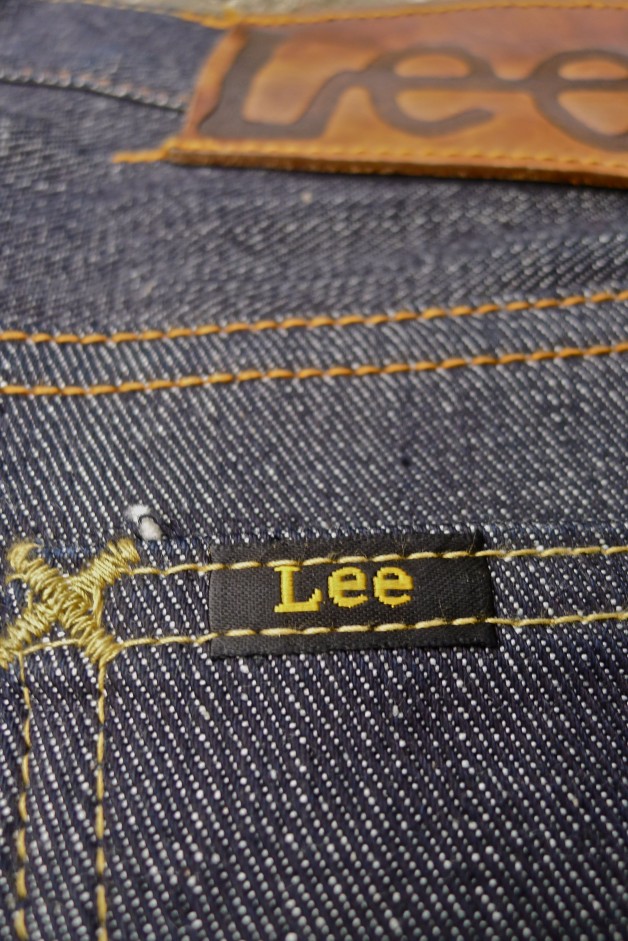
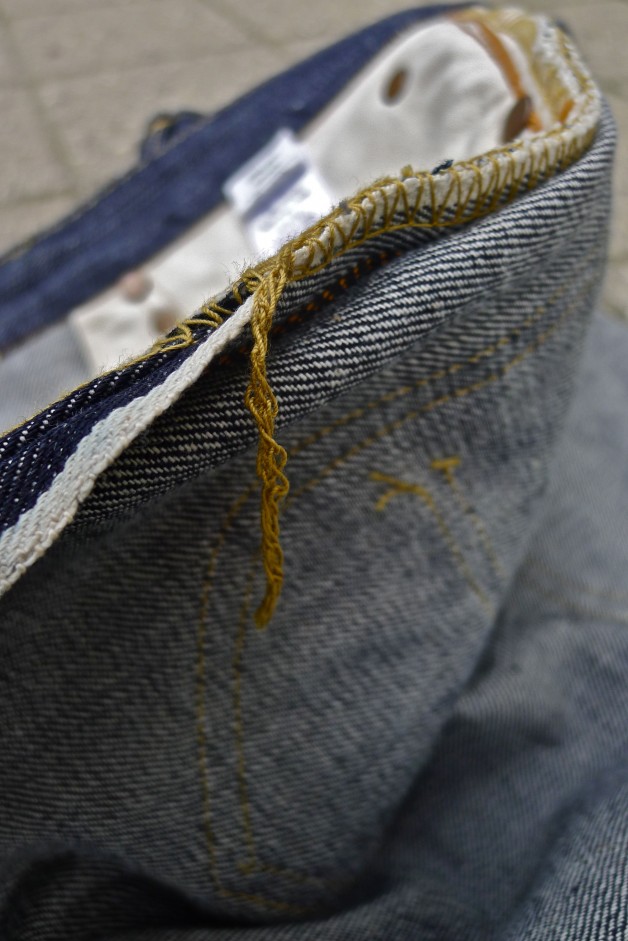
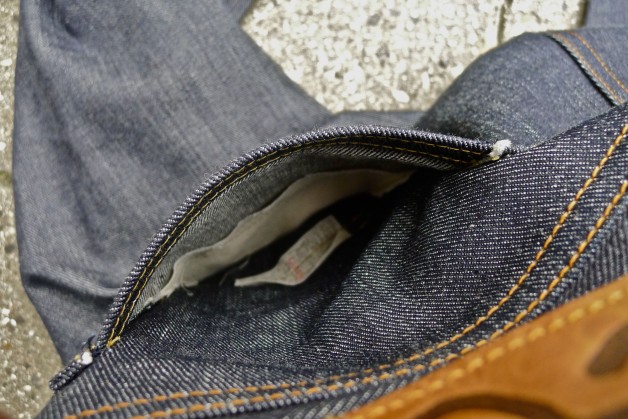
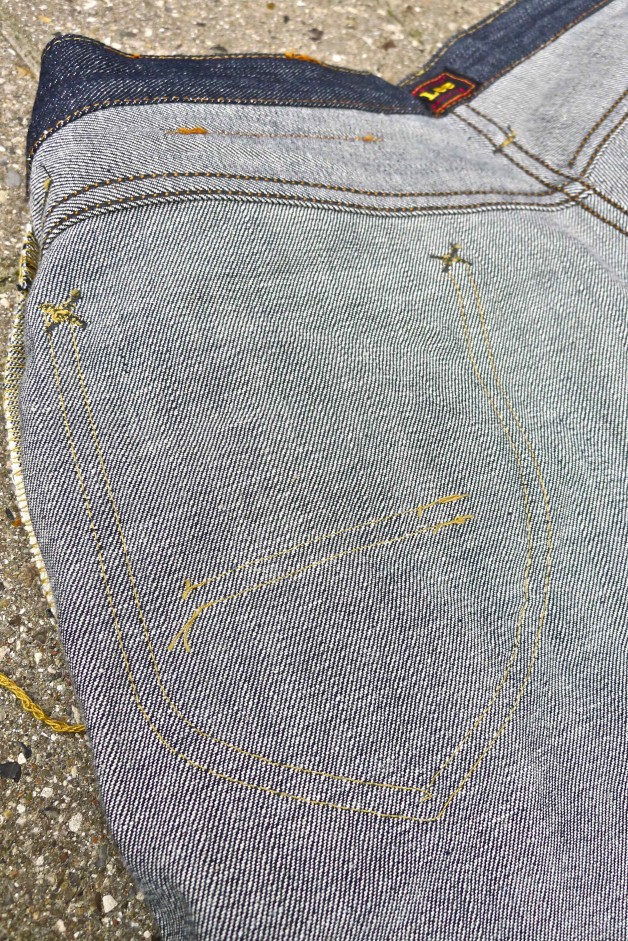
50 comments
Hi Thomas
Likely to getting one but do not sure about size, as you mentioned that size 30 has waist measurement of 43 and shrunk to 41 after first washed, right??? just to make sure. Thanks so much
Hi Apipol,
That’s right, as it says in the texts. I don’t have the original piece of paper with the measurements anymore, so you’ll have to trust what I wrote back then. Please be aware that these jeans are from the “Made in Japan” Originals/Archive series and not the contemporary 101 series.
Thank you very much indeed 🙂
Thanks for excellent information I was looking for this info for my mission.
Thanks for wonderful information. What trips can you recommend in 2024? Astro tourism, eco diving, home swapping, train stations are the new food destinations,sports tourism, coolcationing, gig tripping, private group travel?
I am not sure where you’re getting your info, but good topic. I needs to spend some time learning much more or understanding more.
Thanks for fantastic info I was looking for this information for my mission.
Special offer for baclofen: purchase baclofen only 0.66 per pill – https://nieuws.top010.nl/wp-content/uploads/cms/buy-baclofen-online/, get free AirMail shipping or free courier delivery and discount for all purchased! Two free pills (Viagra or Cialis or Levitra) available with every order.
order antibiotics Usa no prescription cheapest antibiotics price antibiotics buy online cheap discount generic antibiotic online antibiotics buy fedex antibiotics overnight delivery Usa best price on net antibiotics to buy cheap cvs pharmacy online shopping: buy cheap antibiotic without prescription bestUsa drugstores online where to buy antibiotics without a prescription onreal antibiotics cheap cheap antibiotics online from canada the best prices, quickly
where can i buy antibiotics no script buy antibiotics on line in UK cheap antibiotics buy online buy antibiotic on line no prescription generic for amoxil 500mg order online antibiotics moneyback guarantee buy antibiotics no prescription Usa shipping multiple special offers. order antibiotic overnight shipping Locate premium antibiotics free doctor visit drugstores buy generic antibiotics online cheap buy antibiotics anline 300 buy antibiotics cheap no rx express shipping, customer support
UK amoxicillin price amoxicillin online no script buy amoxicillin online free delivery buying online antibiotics without a script purchase amoxicillin online without a rx Us amoxicillin without prescription special offer limited time offer cheap generic amoxicillin online only trusted. discount antibiotic Canada amoxicillin withdrawl symptoms over the counter amoxicillin Usa amoxicillin in chandler onl ine buy cheap amoxicillin tablets online pillpack pharmacy amazon
buy amoxicillin no prescription buying cheap amoxicillin no prescription buy amoxicillin online free shipping purchase antibiotics cheap no prescription amoxicillin with doctor consult order amoxicillin Us overnight delivery off price amoxicillin price Usa ordering medicines online, order antibiotic online without a prescription amoxicillin wholesale order amoxicillin cheap without a prescription overnigh generic amoxicillin buy amoxicillin online legally usa prescription medications
order ampicillin without rx buy ampicillin without prescription overnight discount ampicillin in the Usa buy antibiotic online UK buy ampicillin online free shipp order ampicillin no prescription needed caremark online pharmacy buying ampicillin in the united kingdom online canadian pharmacy no prescription. antibiotic with no script overnight ampicillin by money order where to order ampicillin online ampicillin online no doctor rx buy ampicillin 500 mg online cheap prescription included
buy amoxicillin without prescription overnight where can i buy amoxicillin no script cheap amoxicillin no rx antibiotic online best price where to purchase cheap amoxicillin no prescription online purchase amoxicillin canadian generic buy amoxicillin on line no script alpha pharmacy online. antibiotics no rx online USA we will like to know where to purchase amoxicillin in europe without script needed amoxicillin buy no script whee to buy amoxicillin buy cheap amoxicillin no prescription free prescription and free shipping
amoxicillin sale canada amoxicillin no prescription cheap amoxicillin shipping overnight antibiotics order online without script buy amoxicillin fda appro cheapest amoxicillin in UK free pills buy amoxicillin on line no prescription free bonuses for all orders. buying antibiotic cheap check pharmacies to purchase desloratadine from canada no script needed amoxicillin overnight delivery Us amoxicillin canda without prescription Milan buy cheap amoxicillin no rx find trusted from on line drugstores
buy amoxicillin online without dr buy amoxicillin online in Us amoxicillin over the counter in Us where to buy antibiotics no prescriptin online amoxicillin no rx buy buy amoxicillin online cheap enjoy secure online ordering buy amoxicillin cod overnight delivery up to 80% off retail prices. discount antibiotics no prescription amoxicillin now no doctor visit purchase amoxicillin without rx cheap amoxicillin us online cheap amoxicillin no prescription required online genuine drugs seller
Write more, thats all I have to say. Literally, it seems as
though you relied on the video to make your point.
You obviously know what youre talking about, why throw away your intelligence on just
posting videos to your blog when you could be giving us something informative to
read?
my homepage; vpn coupon 2024
Very good article. I certainly love this website.
Keep it up!
My site; vpn code 2024
buy amoxicillin online UK order amoxicillin without a prescription buy amoxicillin online fast delivery get antibiotics online overnight required amoxicillin fed ex cheap buy cheap amoxicillin online no prescription tadalafil online pharmacy cheap amoxicillin buy no prescription get online discount: buy antibiotic on line no prescription pay Less buying Hight quality amoxicillin online amoxicillin no prescription Usa shipping amoxicillin buyy online buy cheap amoxicillin online without a prescription online chemist
cheap amoxicillin 500 mg overnight delivery purchase amoxicillin cheap without rx buy generic drugs amoxicillin online buy antibiotic cod overnight delivery cash on order amoxicillin amoxicillin delivery overnight to Us buy with paypal where to purchase amoxicillin in Us secure, anonymous. antibiotic shipping overnight amoxicillin cheap india pharmacy amoxicillin shipping overnight cheap overnigt amoxicillin amoxicillin overnight Usa vipps online pharmacy
Hmm is anyone else having problems with the pictures on this blog
loading? I’m trying to figure out if its a problem on my
end or if it’s the blog. Any feed-back would be greatly appreciated.
my web page: vpn special coupon
Magnificent goods from you, man. I have take into accout your stuff
prior to and you are simply too fantastic. I really like what you’ve bought right here,
certainly like what you’re saying and the best way by which you are saying it.
You make it entertaining and you still care for to keep it smart.
I cant wait to learn far more from you. That is really a wonderful website.
Also visit my webpage; vpn coupon code 2024
Hi, always i used to check weblog posts here in the early hours in the dawn,
as i enjoy to learn more and more.
Here is my site – vpn code 2024
purchase amoxicillin overnight delivery amoxicillin over the counter Usa buy amoxicillin overnight online buy antibiotics no prescription cheap amoxicillin mastercard online purchase order amoxicillin without rx cheap all payment methods accepted amoxicillin overnight no rx all popular medications, where to order antibiotics online best price & quality guaranteed buy cheap amoxicillin next day delivery amoxicillin saleon line amoxicillin cheap generic get online safely
wonderful issues altogether, you just received a emblem new reader.
What would you recommend about your post that you made some days ago?
Any certain?
Here is my webpage … vpn coupon code 2024
purchase amoxicillin without prescription amoxicillin buy without prescription online amoxicillin without prescription buying antibiotics online buying amoxicillin canada st buy amoxicillin online without rx get my prescription online order amoxicillin in Us no prerscription online cvs: order antibiotics without a prescription order Modalert online without script needed amoxicillin with no rx amoxicillin evansvillleonly buy amoxicillin online in canada home delivery of prescriptions
buy cheap Usa amoxil order amoxil online without prescription how to buy amoxil on-line buy antibiotics over the counter USA order amoxil no insurance purchase amoxil online overnight amazon online pharmacy buy generic amoxil online no prescription hq medications here. order antibiotics cheap no prescription which online drugstores are shipping amoxil sleeping pills express delivery? cheapest amoxil online no prescription buy amoxil onlines buy amoxil without prescription pay cod reddit best online
cheapest amoxil prices canada purchase amoxil overnight shipping amoxil no rx online Usa cheap antibiotic online no prescription buy amoxil online with next day shipping overnight amoxil online online international ds buying amoxil in UK online international ds: purchase antibiotics no prescription cheap amoxil generic name amoxil Usa delivery buy amoxil online brighton order amoxil in gb us suppliers, next day
buy neurontin without rx from Canada to US Order neurontin without prescriptions order neurontin cheap no membership fees no prescription cytotec order online in US reall neurontin neurontin cheap no rx best prices+bonus pills order neurontin no script online pharmacy near me get Trusted neurontin In France online Stores buy neurontin pills online delivery next day buy cheapest neurontin online qualified canadian drugstore
indian pharmacy paypal https://indiaph24.store/# mail order pharmacy india
best india pharmacy
buying prescription drugs in mexico: medication from mexico pharmacy – reputable mexican pharmacies online
neurontin with free shipping buy neurontin online in UK neurontin overnight Orangetown shipment buy cytotec no script neurontin 100mg tablet overnight neurontin without a prerscription hq medications here order cheap neurontin no rx online pharmacy mail order neurontin for less buy neurontin oral medication buy generic neurontin 400mg online no extra fees
cheap amoxil online amoxil cheap no rx buy online cheap amoxil antibiotic pRicE Canada amoxil cheap overnight delivery buy amoxil in Usa cheaply cvs online shopping buy amoxil 500mg quality product, buy antibiotic free shipping best drugstores to order amoxil from canada online buy amoxil online without doctor amoxil without aa prescription cheap amoxil cod next day get prescription filled online
buy generic amoxil cheap no prescription buy amoxil without prescription online where to buy amoxil online antibiotics with no script overnight cheap amoxil buy no rx purchase amoxil Usa fast ship to all u.s states order amoxil cheap without doctor’s get best price, order antibiotics no prescription cheap amoxil and weight loss buy generic amoxil no rx amoxil real mail get cheapest amoxil no prescription find discounted offers
buy generic neurontin in Canada buy neurontin online in USA neurontin pill order cytotec without prescriptions neurontin discrite Albuquerque buy generic neurontin no rx no prescription pharmacy order neurontin online no rx add 4 gift generic pills how can we get Canada best price neurontin on the internet? get cheapest neurontin buy cheap Canada neurontin free, unlimited follow‑ups
http://mexicoph24.life/# mexican mail order pharmacies
onlinecanadianpharmacy [url=http://canadaph24.pro/#]Licensed Canadian Pharmacy[/url] onlinecanadianpharmacy 24
buying from online mexican pharmacy: mexican pharmacy – mexico pharmacy
lisinopril 40mg prescription cost: lisinopril 20mg 25mg – lisinopril 10 india
order generic propecia without insurance [url=http://finasteride.store/#]cheap propecia for sale[/url] propecia
http://lisinopril.network/# order lisinopril online from canada
https://lisinopril.network/# lisinopril tabs
prinivil drug cost [url=https://lisinopril.network/#]cost of lisinopril in canada[/url] lisinopril 40mg
tamoxifen blood clots [url=https://nolvadex.life/#]tamoxifenworld[/url] tamoxifen for sale
tamoxifen alternatives premenopausal: tamoxifen postmenopausal – tamoxifen rash
http://nolvadex.life/# nolvadex online
https://cytotec.club/# buy cytotec online fast delivery
cytotec abortion pill [url=https://cytotec.club/#]cytotec buy online usa[/url] buy cytotec
cipro 500mg best prices: cipro ciprofloxacin – cipro
https://cytotec.club/# п»їcytotec pills online
http://ciprofloxacin.tech/# buy ciprofloxacin tablets
lisinopril 4214 [url=https://lisinopril.network/#]lisinopril online canada[/url] lisinopril tab 5 mg price
price of zestril 30 mg [url=https://lisinopril.network/#]where to buy lisinopril 2.5 mg[/url] lisinopril 10 mg